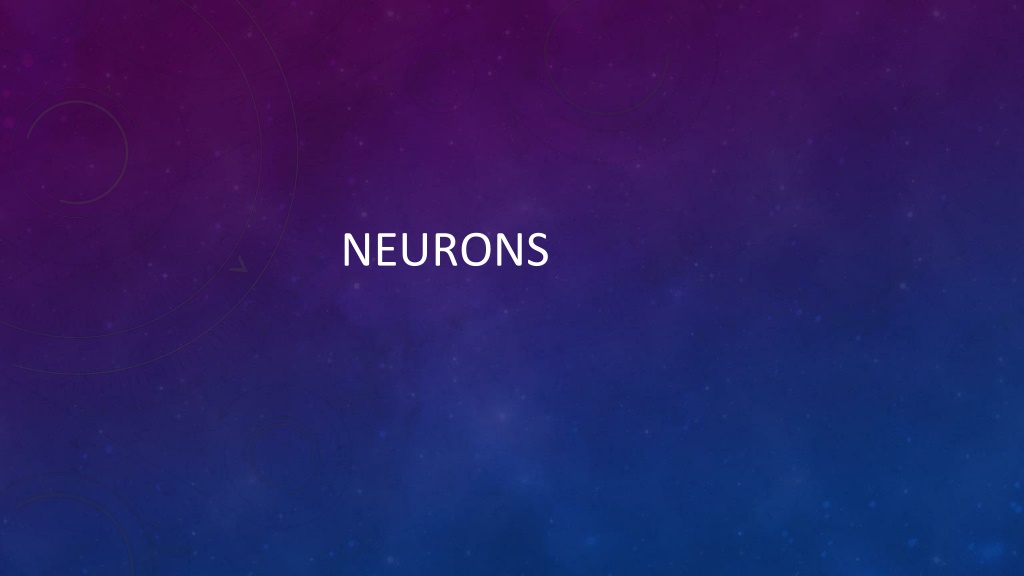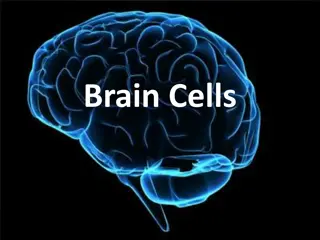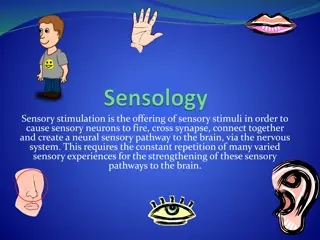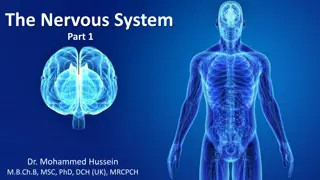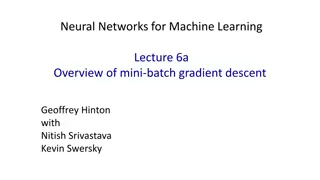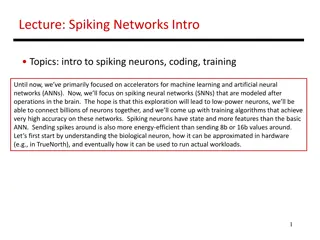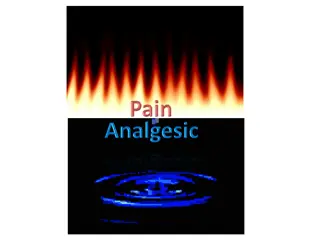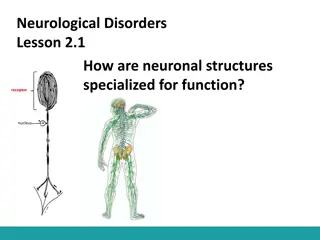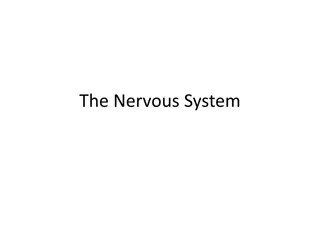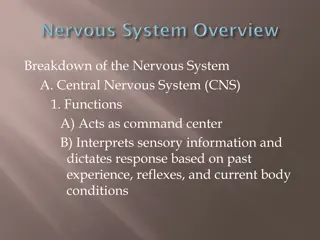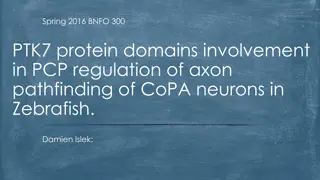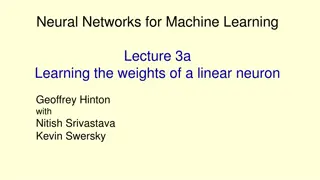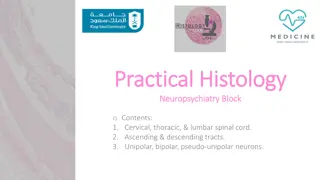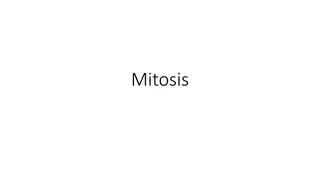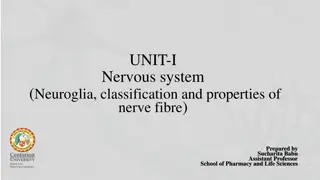NEURONS
Nerve cells, known as neurons, make up the human brain, each specialized for receiving, processing, and transmitting information via electrical impulses. Explore the structure of neurons, types of neurons, and their functions, including receptor cells sensitive to various stimuli, effector cells for reactions, and adjustor cells in the nervous system.
Download Presentation

Please find below an Image/Link to download the presentation.
The content on the website is provided AS IS for your information and personal use only. It may not be sold, licensed, or shared on other websites without obtaining consent from the author. Download presentation by click this link. If you encounter any issues during the download, it is possible that the publisher has removed the file from their server.
E N D
Presentation Transcript
NEURON STRUCTURE Content :- Introduction Structure of neuron Types of neuron Functions of neuron
INTRODUCTION Nerve cells are called neurons. The human brain has about one billion neurons. Each neuron is a cell that uses biochemical reactions to receive, process, and transmit information. In simple terms, a neuron is a cell specialized to conduct and generate electrical impulses and to carry information from one part of the brain to another.
Cells 1. Receptor 2. Effector 3. Adjustor
Receptor cell it is affected by 4 types of stimulus that is: 1. Thermal 2. Mechanical 3. Chemical 4. Light Receptor cells are specialized nerve cells which inform about environment and changes in the body. Wenger, Jones & Jones We tend to classify receptors according to the location or origin of the stimulus 1. Exteroceptor- respond to stimuli from outside the body - vision, sound, touch, smell, temperature, pain etc. 2. Proprioceptor-a sensory receptor which receives stimuli from within the body, especially one that responds to position and movement. 3. Interoceptor- a sensory receptor which receives stimuli from within the body, especially from the gut and other internal organs. 4. Nociceptor- is a sensory neuron that responds to damaging or potentially damaging stimuli by sending possible threat signals to the spinal cord and the brain.
Effector cells With the help of these cells individuals react. Muscles- 1. Smoothed muscles 2. Striped Muscles 3. Cardiac Muscles Glands- 1. Exocrine 2. Endocrine
Adjustor Cells Central Nervous system
Neurons Nervous system smallest Unit Santiago Ramony Cajal Stimulation is changes in electrical impulses- Biological Transducer
CELL BODY Like other cell bodies, a neuron s soma contains a nucleus and specialized organelles. It s enclosed by a membrane which both protects it and allows it to interact with its immediate surroundings.
AXON An axon is a long, tail-like structure which joins the cell body at a specialized junction called the axon hillock. Many axons are insulated with a fatty substance called myelin. Myelin helps axons to conduct an electrical signal. Neurons generally have one main axon.
DENDRITES Dendrites are fibrous roots that branch out from the cell body. Like antennae, dendrites receive and process signals from the axons of other neurons. Neurons can have more than one set of dendrites, known as dendritic trees.
Neurons or nerve cells - Structure function and types of neurons _ Human Anatomy _ 3D Biology_2.mp4
TYPES OF NEURON 1. SENSORY NEURON :- Sensory neurons are triggered by physical and chemical inputs from your environment. Sound, touch, heat, and light are physical inputs. Smell and taste are chemical inputs.
2. MOTOR NEURONS :- Motor neurons play a role in movement, including voluntary and involuntary movements. These neurons allow the brain and spinal cord to communicate with muscles, organs, and glands all over the body. There are two types of motor neurons: lower and upper. Lower motor neurons carry signals from the spinal cord to the smooth muscles and the skeletal muscles. Upper motor neurons carry signals between your brain and spinal cord.
3. INTERNEURONS :- Interneurons are neural intermediaries found in your brain and spinal cord. They re the most common type of neuron. They pass signals from sensory neurons and other interneurons to motor neurons and other interneurons. Often, they form complex circuits that help you to react to external stimuli.
FUNCTIONS OF NEURON Neurons send signals using action potentials. An action potential is a shift in the neuron s electric potential caused by the flow of ions in and out of the neural membrane. Action potentials can trigger both chemical and electrical synapses.
1. CHEMICAL SYNAPSES In a chemical synapse, action potentials affect other neurons via a gap between neurons called a synapse. Synapses consist of a presynaptic ending, a synaptic cleft, and a postsynaptic ending. When an action potential is generated, it s carried along the axon to a presynaptic ending. This triggers the release of chemical messengers called neurotransmitters. These molecules cross the synaptic cleft and bind to receptors in the postsynaptic ending of a dendrite.
2. ELECTRIC SYNAPSES Electrical synapses can only excite. They occur when two neurons are connected via a gap junction. This gap is much smaller than a synapse, and includes ion channels which facilitate the direct transmission of a positive electrical signal. As a result, electrical synapses are much faster than chemical synapses. However, the signal diminishes from one neuron to the next, making them less effective at transmitting.
Types of Glia cell 1. Astrocytes- Brain Barrier 2. Microglia- Phagocytic 3. Oligodendrocytes- Form preservation of myelin sheath 4. Schwann cell- Peripheral nervous system
